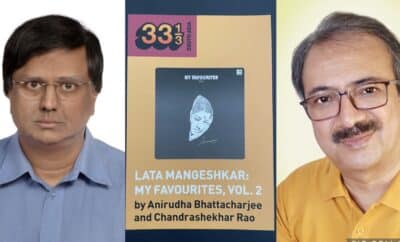Song Sketch
Of Moonlit Face And Dreams – Mehtaab Tera Chehra – Aashiq
60s was the time when melody trickled from the songs into the ears and headed straight towards the heart. That is the reason why inspite of thousands of songs from the era are largely played on the loop and the music lovers still want more. And the expectation certainly rises when we see names like Raj Kapoor, Shankar-Jaikishan, Shailendra, Mukesh and Lata Mangehskar together. One is spoilt for choices.
Anand Desai, our guest author and music analyser chooses a beautiful, lesser known romantic number from Aashiq (1962) for the instrument and rhythm analysis.
Mehtaab tera chehra kis khwaab me dekha tha
Ae husn zara batla, tu kaun main kaun hu
Khwaabon mein miley aksar, ik raah chale milkar
Phir bhi hai yahi behtar, mat puch main kaun hun
Kyun ghiri ghata tu hi bata
Kyun hansi fiza tu hi bata
Phool kyun khila tu hi bata
Iss raah pe chalna hai, iss gaah pe rukna hai
Iss kaam ko karna hai batla ki main kaun hun
Zindagi ko tu geet bana
Dil ke saaz pe jhoom ke ga
Iss jahan ko tu pyaar sikha
Mehtaab tera chehra kis khwaab me dekha tha
Raag Bhairav Taal … A Bongo 4/4 beat
[1] Instrumentation: SJ has used a limited array of instruments and not allowed the arrangement to overpower the verse.
Sitar, Sarangi, Bongos, Accordion, Kabashe (an instrument from percussion family) and Chimta are the instruments used.
The song starts with a 3 seconds wail of a Sarangi –
The four divisions of the mukhdas should be heard in isolation.The first three division have an Accordion fill and the last one has a Sitar fill.
The second section of the interludes are in drut lai (rhythm) with a Sitar, Kabashe and Chimta combo, ending with a slow descending Sarangi Ostinato …..
However the second Interlude has a Flute after the Sitar section ending with an Accordion.
Just see how Lata escalates the pitch Zindagi ko tu geet banaaa, dil ke saaz pe jhoomke gaaaa iss jahan ko tu pyaar sikhaaaaaa and ends at an high pitch aaaaaa…aa aalap of the kafiya at every line she picks up a slightly higher pitch. Then Mukesh comes in at a low octave to continue the lines of the Mukhada and all through the rhythm and meter of the song is intact and steady. The Bongos follow a 4/4 beat and an Urdu Bayan thrown in.
The coda or the concluding piece is soft and ends with a 16 seconds Lata’s alaap….. Except for these small ornaments in the orchestration , SJ’s score here is pretty routine
Shailendra has framed the song given complete dominance of the words – Raj Kapoor knowingly asks Padmini Tu kaun mein kaun hoon, iss raah pe chalna hai ..iss gaah pe rukna hai
Gaah means a destination (amazing words)
Hrishikesh Mukherjee’s direction does not leave out the fine details. Watch when Raj takes
Padmini’s hand and walks away exactly at 2.55, he turns around for a second and waves of the branch denoting that there Now no rukaavat in their romance.
Kaviraaj has excelled in all the songs of this film, words flowing from the pen of a man who is in deep love himself.



